Supermarine Spitfire Mk.Vb
249 Sqn, Royal Air Force
RAF Krendi (Q’rendi), Malta GC, 1943.
Airfix 1/72 with various markings
The history of Malta GC during WW2 is a favourite of many aircraft modellers, not
least due to the variety of aircraft and colour schemes that could be found defending
the island. At its peak, during March-
On 28 April 1943, Sqn Ldr Joseph Lynch, flying Spitfire EP829 of 249 Squadron based at Krendi was credited with the 1000th aircraft to be shot down by the Malta defenders. Lynch, the Sqn CO, was an American flying with the RAF.
RAF Spitfires in Malta wore many colour schemes, but during the latter part of the
battle when most combat took place over the sea, they settled on a dark blue, the
exact nature of which is hotly debated. Determining which blue is part of the fun
of building Malta-
Building the (old) Airfix Spitfire Vb Kit:
The older Airfix Spitfire Vb kit was first released in 1974 and continued in production
until around 2013. Although quite simple in detail, it has a very good shape, is
easy to buld, has no “deep trench” panel lines and was highly regarded for many years
(but not to be confused with the equally long-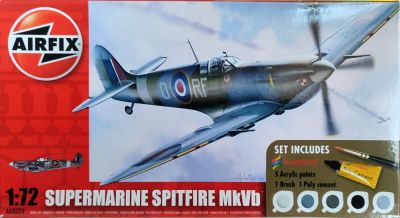
I had hoped that this would be a quick and easy addition to my Malta Air Battle project, since I had a spare Airfix Spitfire Vb, a set of Volkes filters and the Xtradecal markings for EP829 T@NT, the 249 Sqn aircraft credited with the 1,000th victory over Malta. Even better, it was an aircraft that bore the locally improvised toned down camouflage, with a dark grey or blue replacing the sand of its desert camouflage.
Ha! simple build? -
Was it a Vb or a Vc? (I'm reasonably certain it was a Vb based on serial number, but RAF Malta often removed the 2nd set of guns on the Vcs, so it might be a Vc?) Did it have the Volkes filter under the nose or not? Were the undersides Sky or Azure blue? Were the wings clipped or not? What colour was the spinner? Was it a DeHavilland or Rotol propeller? Was the canopy armoured? What colour were the squadron codes? And most difficult of all, was it actually camouflaged in dark earth and grey/blue uppers, or was it entirely grey/blue?
Now, given regular non-
I did find one picture with camouflage and the full span wings fitted, but still
no Volkes filter. The codes are a guess -
Of course, I found all this out after I had chopped off the lower engine cover to
fit the Volkes filter. However, I am delighted to report that an Italeri kit's (can't
remember which one) lower engine cover fits perfectly in the space! Clipping the
wings is a relatively easy task (out with the razor saw again). The DH propeller
was a little more difficult -
Decision made and on with the show -
The older Airfix Spitfire kits (bar the dreadful Mk.IX) had a good reputation, although
they are clearly products of their time. This one was a starter kit that I picked
up very cheaply. Its a 2011 issue, but contains the 1974 mould inside, which seems
to have suffered somewhat, as it did not fit together as well as I remembered. Detail
is lightly raised -
The blue paint is another subject of much discussion. Theories range from US Navy paint (some aircraft were painted blue on USS WASP prior to flying off for Malta), special order British Dark Mediterranean Blue, borrowed RN vehicle paint, to a variety of non aero paints from dubious sources. I went for Humbrol 104 Oxford Blue to start with, then toned it down with an overcoat of thinned extra dark sea grey, finally weathering with Humbrol 84 hemp to reflect either dirt or the original paint showing through. I also decided to weather the aircraft quite heavily (based on photos), although it appears that 249 Sqn often polished up their blue Spitifres toward the end of the campaign to eke out that last knot of speed!
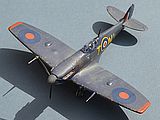
Part 2
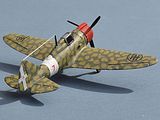
September 2023
Supermarine Spitfire Vb
Reggiane Re.2000 Falco
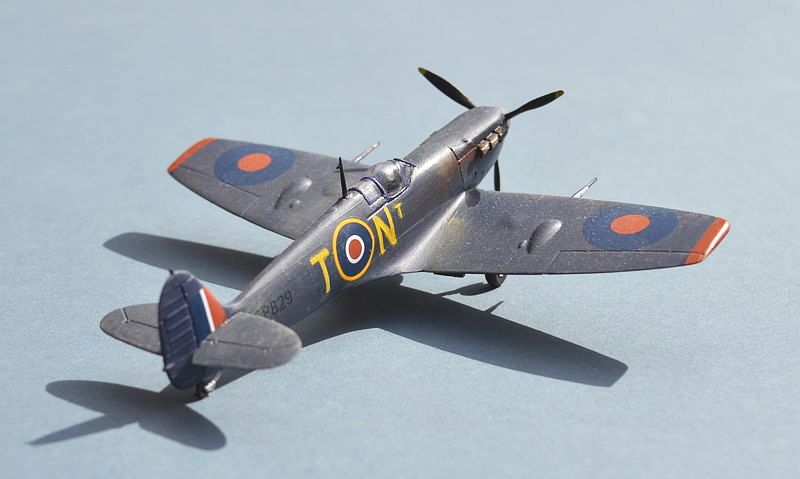
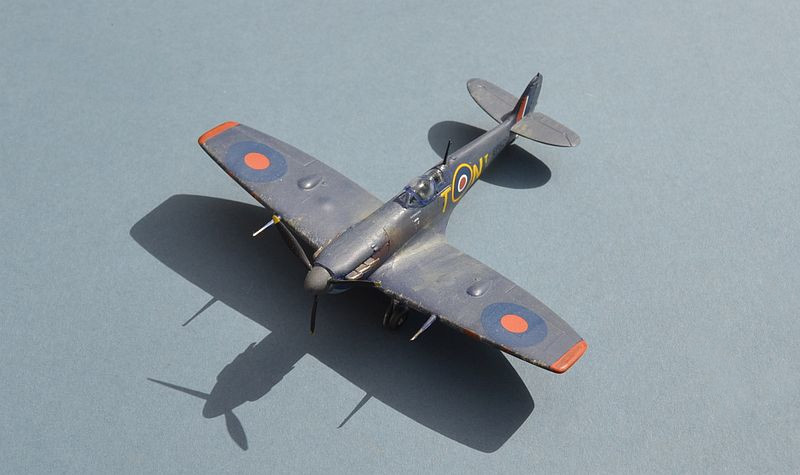
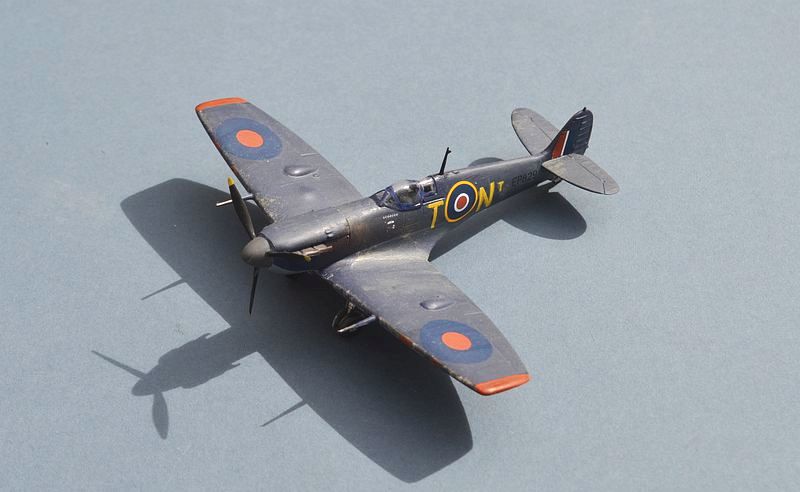
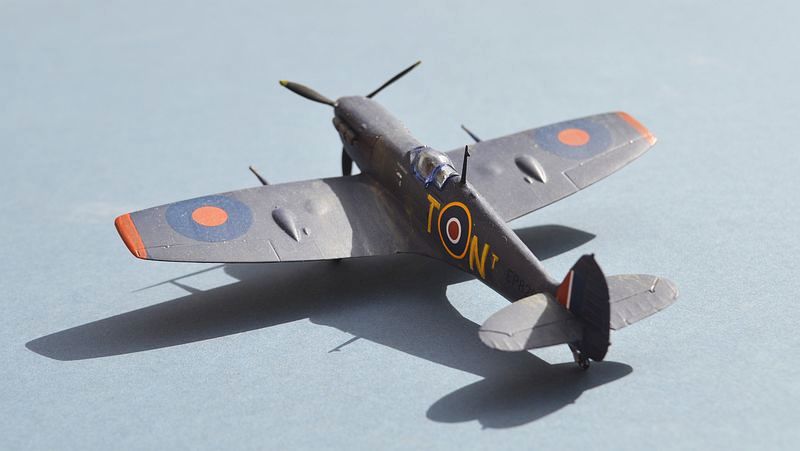


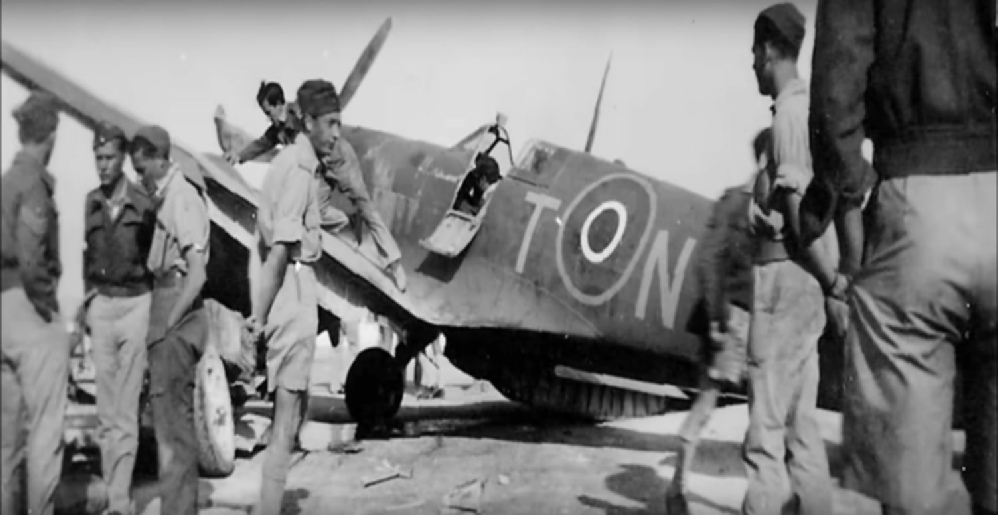
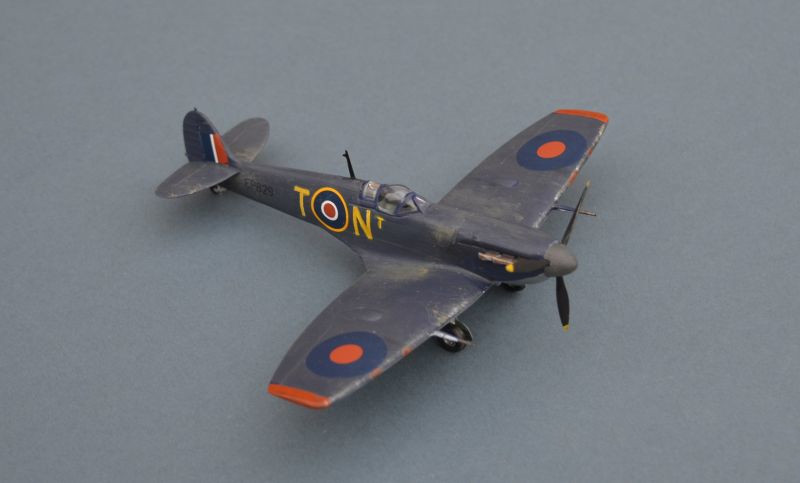
Background picture: A Spitfire Vc in the hangar at the Malta Aviation Museum, T’Qali.
Markings being applied to Lynch’s machine on return from the 1000th victory.
© www.gengriz.co.uk
Link to more RAF aircraft on my Friends & Allies pages